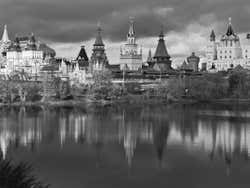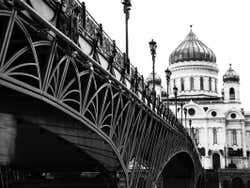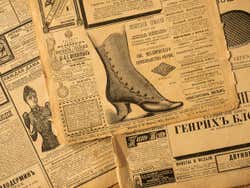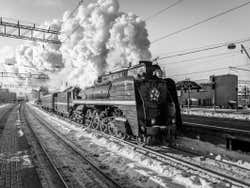
History of Moscow
Moscow has seen its fair share of history, from invasions to revolutions: these days it is home to a wealth of culture and is one of the most populated capitals in the world.
The name of the Russian city comes from the river that courses through it, the Moskva. While the exact date of the founding of the metropolis is unknown, it was first mentioned by name in 1147, and was a convenient meeting place well accessed by rivers and roads.
Medieval Moscow
This small trading post grew and was fortified over the next few centuries, with churches and monasteries being built. However, the 13th century saw a Mongol invasion burning the city to the ground and killing all who lived there, with Moscow becoming a Grand Duchy within the Mongol Empire. The city prospered and would eventually lead a united Russian army in victory over the Mongols, ending up as capital city by the end of the 15th century.
During the 16th to 17th centuries under the Tsardom of Russia, Moscow's population grew rapidly, and many of the monuments emblematic of the city were constructed, from Novodevichy Convent to Saint Basil's Cathedral and the Kremlin. Despite its growth, it suffered famine, plagues, attacks by the Crimean Tatars and destructive fires - unsurprising considering much of the city was built of wood.
Under the Russian Empire
When Peter the Great founded the Russian Empire in 1712 and made Saint Petersburg its capital, Moscow was suddenly relegated to second place and population quickly declined. However, over the ensuing century, the city's infrastructure was built up and connections to the capital were created. When Napoleon invaded in 1812, Moscow's inhabitants were evacuated, but not before allegedly setting fire to the city to sabotage the French forces. The city's destruction was claimed as a great success by the Muscovites, and it was quickly rebuilt afterwards: Moscow State University was founded, the Bolshoi Theatre was built, and any number of monuments celebrating the city's victory were put up.
Throughout this time, Moscow was also experiencing a population boom, with a massive influx of peasants moving to the metropolis from rural farms in search of work. In stark contrast to the lavish architecture being built, the city was also filled with poverty-stricken slums, and increasing discontent lead to revolution.
Bolshevik Revolution & Soviet Russia
Mass political and social unrest instigated an attempted revolution in 1905, but it wasn't until 1917 that the movement really took hold of Russia. That year saw the February and October Revolutions, followed by a Civil War which ended with the monarchy being abolished, the royal family being executed, and the Soviet Union being established by the socialist political party known as the Bolsheviks. In 1922, the Communist government made Moscow capital again.
The Russian Army was victorious in defending the city from German offensives in the Battle of Moscow during World War II, and the Soviet leadership left its mark on the capital over the next five decades. Improved roads, bus, train and metro networks modernised Moscow; high-rise apartments provided a solution to serious housing crisis, and atheist ideology saw the destruction or conversion of over half of the country's churches. Remnants of the Soviet state can still be seen today across much of the city, for example in the statues and artwork throughout the Moscow Metro.
In 1980, Moscow hosted the Summer Olympic Games, an event which was boycotted by the United States and over 60 other countries because of the Soviet-Afghan War. While this increased the Cold War tensions that gripped the two superpowers, there was no denying that Russia was liberalising under leader Mickhail Gorbachev's "perestroika" reforms.
Moscow since 1991
1991 saw the Soviet Union being dissolved, with Moscow remaining capital of the Russian Federation. Enormous population growth since the 1990s means it is now the largest city on the European continent, with over 13 million people living within the city limits alone. Political, economic and social changes have "Westernised" Moscow, which can be seen in the presence of international chains in the city and in the restoration of churches demolished under Stalin, like the Cathedral of Christ the Saviour.



